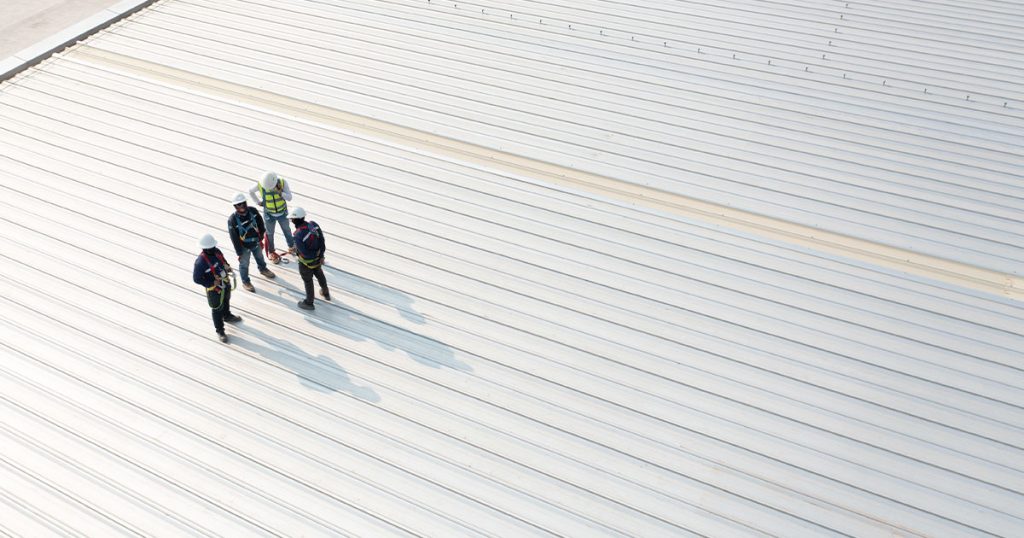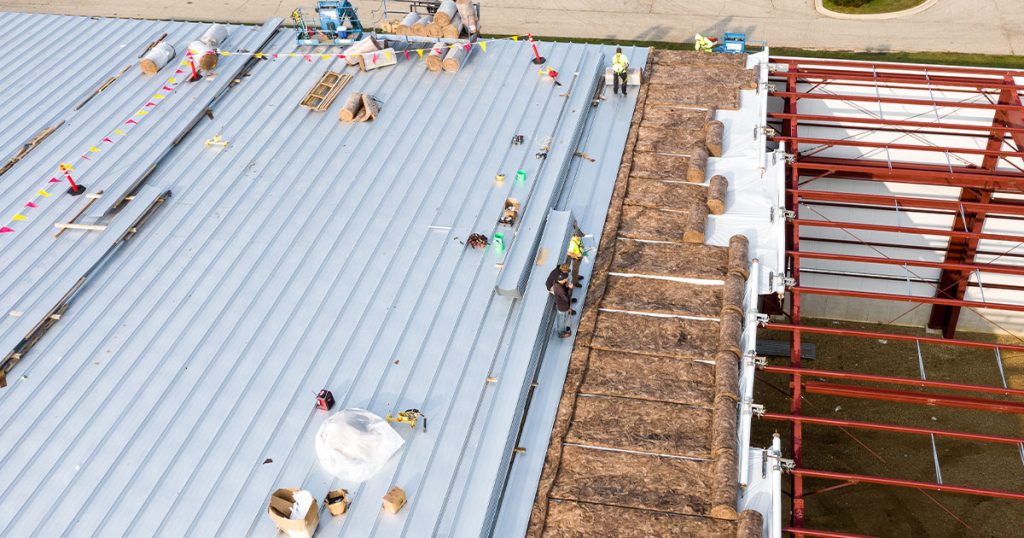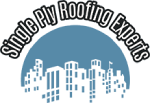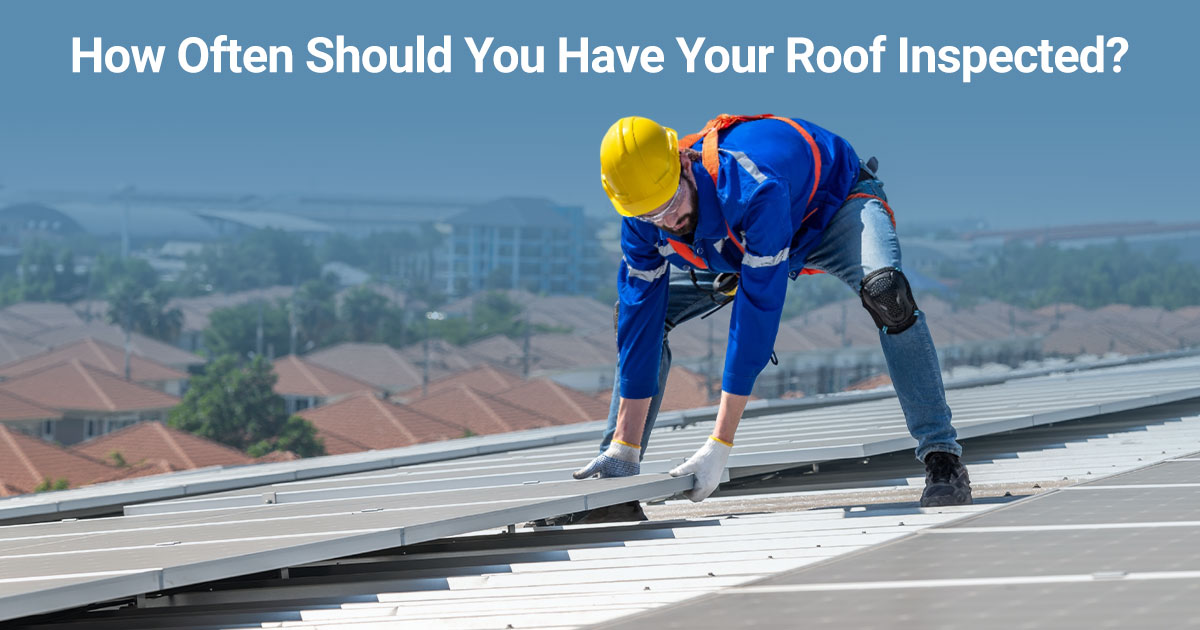Your commercial roof works harder than you might realize. Every day it faces intense heat, heavy rain, strong winds, and the passing of time. Yet for many businesses, the roof is out of sight and out of mind until a leak disrupts operations, damages equipment, or forces an unexpected replacement.
At Single Ply Roofing Experts, we have spent more than 25 years helping businesses throughout California prevent leaks, extend the life of their roofing systems, and avoid costly emergencies through professional commercial roof maintenance.
In this article, we will walk you through everything you need to know, including why maintenance matters, how often inspections should take place, what belongs on a proper maintenance checklist, and expert tips we have learned from decades in the field.
What Is Commercial Roof Maintenance?
Commercial roof maintenance is not just about removing debris or cleaning drains. It is a structured and preventive approach that involves inspections, small repairs, cleaning, and protective measures to keep your roof performing well over time.
Regular maintenance protects structural integrity, prevents leaks, preserves insulation value, and keeps warranties valid.

From flat roof systems to TPO and PVC membranes, every commercial roof benefits from consistent attention. A well-maintained roof often lasts twice as long as one that is neglected, which can delay expensive replacement for many years.
Why Regular Maintenance Matters for Commercial Roofs
Routine maintenance is not optional. It is an essential part of protecting one of your building’s most valuable assets. Regular commercial roof maintenance provides several key benefits:
- Prevents leaks and interior damage before they affect business operations
- Extends the lifespan of roofing membranes and flashing systems
- Keeps warranties active and valid
- Lowers energy expenses by maintaining insulation and reflectivity
- Reduces operational downtime and unexpected disruptions
We have seen many businesses spend large sums on emergency replacements that could have been avoided with a simple scheduled service. Ignoring a small crack or a clogged drain today often leads to a full replacement later.
How Often Should Commercial Roofs Be Inspected?
As a general rule, commercial roofs should be inspected at least twice a year, typically in spring and fall, and again after major storms.
This schedule allows us to catch seasonal wear, storm damage, and early warning signs before they escalate. Certain roof types, such as TPO or PVC, may require special attention to seams, coatings, or drainage systems, but the frequency remains the same.
If you cannot remember the last time your commercial roof was inspected, that is a sign it is overdue.
Commercial Roof Maintenance Checklist
Professional maintenance follows a structured checklist that ensures nothing is overlooked. Here is what our certified specialists examine during each service:
- Clear debris and roof drains to keep water flowing properly
- Inspect flashing and seams for cracks, separation, or failed sealant
- Check for ponding water, bubbles, or soft spots in membranes
- Examine rooftop equipment and penetrations for loose seals or leaks
- Repair small membrane cracks or blisters before they worsen
- Reapply protective coatings as needed to maintain UV resistance and waterproofing
- Review roof edges, terminations, and expansion joints for movement or stress
- Inspect insulation layers for moisture intrusion or compression damage
Although some of these steps might seem simple, visual do-it-yourself inspections almost always miss subtle signs of failure. Professional inspections rely on trained eyes, specialized tools, and years of experience reading roofs like a map.
Cost of Commercial Roof Maintenance
The cost of maintenance depends on several factors, including roof size, current condition, and the level of service required. However, we always remind clients that maintenance is not an expense. It is protection.

A single blocked drain can cause thousands of dollars in interior damage. A small split seam ignored for a season can saturate insulation and raise energy bills significantly.
A minor repair today can prevent a complete tear-off tomorrow. Over time, well-maintained roofs consistently outlast neglected ones by many years, and at a fraction of the cost of replacement.
Common Mistakes Businesses Make with Roof Maintenance
Even experienced property managers sometimes make avoidable mistakes. The most common include:
- Waiting for visible leaks before scheduling service
- Hiring unlicensed contractors who lack proper diagnostic skills
- Skipping inspections after storms and missing hidden damage
- Failing to document maintenance, which can void warranties
- Keeping inconsistent records, which complicates future claims or sales
A structured roof maintenance plan eliminates these issues and ensures problems are addressed early rather than after costly damage occurs.
Expert Tips from Single Ply Roofing Experts
After decades of maintaining commercial roofs across California, here are some of the most valuable tips we share with clients:
- Schedule maintenance during dry seasons to make inspections more accurate and minimize interruptions
- Combine inspections with gutter and drain cleaning to improve overall water management
- Invest in roof coatings to strengthen UV resistance and waterproofing, especially on flat or low-slope roofs
- Keep digital maintenance records and inspection photos to protect warranties and document history for buyers or insurers
- Plan maintenance as part of your annual budget instead of treating it as an emergency expense

Following these steps is one of the most effective ways to avoid unexpected problems and extend your roof’s lifespan.
FAQs about Commercial Roof Maintenance
How often should I schedule maintenance for a flat commercial roof?
Flat roofs should be inspected at least twice a year, ideally in spring and fall, and again after major storms. Because flat surfaces are more prone to ponding water and drainage issues, regular checks are especially important.
Can roof maintenance extend warranty coverage?
Yes. Most roofing manufacturers require documented maintenance to keep warranties valid. Neglecting maintenance can void coverage, leaving you responsible for preventable repairs.
What’s the average cost of routine roof maintenance?
Costs vary depending on the size and condition of your roof, but maintenance typically represents a small fraction of potential repair or replacement costs. It is one of the highest return-on-investment expenses for any facility.
Should I perform maintenance myself or hire experts?
While simple visual checks can help between scheduled visits, complete maintenance should always be done by certified professionals. Trained specialists can identify issues that are easy to overlook.
What happens if I skip maintenance for a few years?
Small issues will almost always get worse. Expect higher repair costs, reduced roof lifespan, potential warranty voidance, and a greater risk of leaks that can disrupt business operations.
Secure Your Business Investment with Professional Roof Maintenance
Your roof protects much more than just a structure. It safeguards your business, your employees, your equipment, and your peace of mind.
At Single Ply Roofing Experts, we approach every commercial roof with the same level of care and precision as if it were our own. With customized commercial roof maintenance plans, detailed inspections, and decades of hands-on expertise, we help businesses avoid surprises and keep their roofs performing at their best year after year.
Contact us today to schedule a professional inspection and receive a tailored maintenance plan designed for your building.

